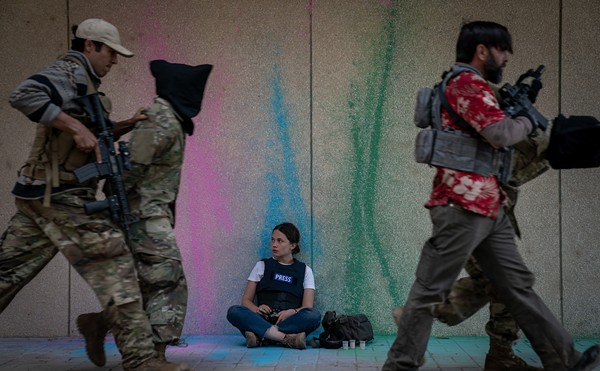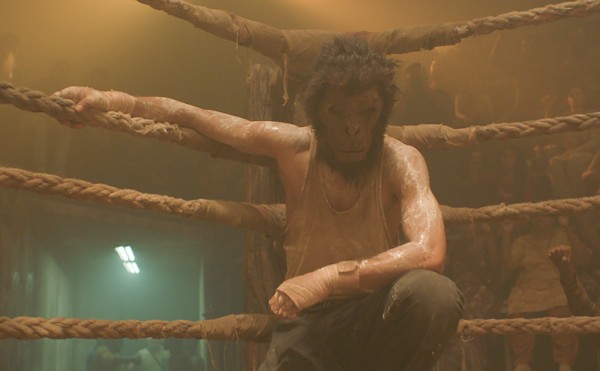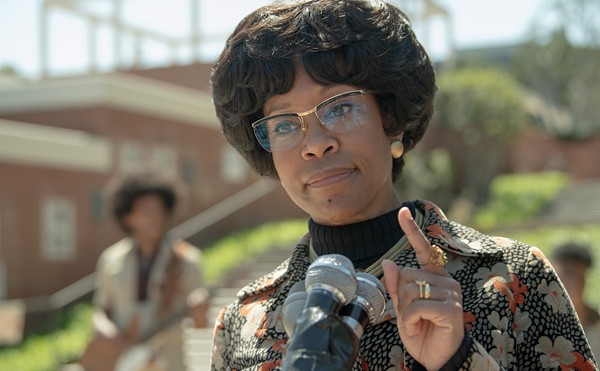Fifteen years after ushering in a new era of CGI animation, and eleven years after a colossally successful pre-millennial sequel, the Toy Story franchise returns to a changed world. Its irresistible conceit and snappy good humor remain largely intact, though now it also hauls a saltier and more anxious sensibility. Inanimate figurines don't age, but they do get nicked up and discarded, and that tension between immortality and irrelevance remains the central conflict in Lee Unkrich's Toy Story 3.
Andy is all grown up and about to drive off to college, leaving the fate of his toys uncertain. Will they be stored in the attic, left on the curb for sanitation pickup or delivered to the local daycare center? All of the above, it turns out, as the whole gang gets caught in an odyssey of compounded indignities. Fears of the unknown, of neglect and abuse, are gradually eclipsed by the threat of disposal. Identifying with plastic figures has always been essential to the series' playfully perverse, aptly adolescent allure, but here, that empathy mutates into macabre existentialist dread. How many kids' movies lead their protagonists to the precipice of a flaming pit of Hell?
As in TS2, this sequel begins with a flashy blockbuster parody prologue, replete with Troll doll hostages and a mushroom cloud of blood-red monkeys, before it's revealed that the carnage was all born of young Andy's imagination. Fast-forward to the present, where Andy has matured into a lanky, sensitive young adult (you can trace Pixar's animation development on the progressively less-dead-eyed faces of the series' humans). While Buzz Lightyear (Tim Allen) was the favored playmate in TS2, Andy chooses old pal Woody (Tom Hanks) as his college companion. But before he can depart, Woody tries to save his scorned pals from Sunnyside Daycare, initially presented as a heavenly vision of constant, grateful play and communal living. Alas, their utopia turns out to be a veritable penal colony, presided over by a despotic pink huggybear called Lotso (Ned Beatty) and his two henchmen, a lumbering lazy-eyed baby doll and Barbie's swishy soul mate, Ken (Michael Keaton). After suffering the abuses of rough-housing toddlers, the group embarks on an extended, inspired prison break made possible by Buzz's daredevilry and Mr. Potato Head's reconstitution as a floppy tortilla. Yet danger persists beyond the bounds of daycare.
Consistent with the advanced maturation of kid culture, this 21st-century children's story features faster, louder, more intense action, saucier sexual innuendos ("Nice as-cot," is how Barbie greets Ken), more romantic pairings than Love's Labour's Lost (do toys really need life partners?) and escalating evocations of death. From cardboard-box coffins and pulverizing machinery to the aforementioned fiery pit — which our heroes approach with solemn, hand-holding resignation — this might be Disney's most morbid family movie since The Black Hole's grim voyage to nothingness in '79.
TS3, like its predecessors, is a clever, engrossing adventure and, like any sequel, it tries to balance continuity with novelty, the latter provided by a cadre of shiny new characters (led by a plush-toy improv troupe) in superfluous 3-D. Pixar has always wedded technological innovation to classic storytelling, and despite some unwelcome steps toward snarky Shrekification, this latest film still manages to bull's-eye the primal emotions that resonate with children of all ages. When teenaged Andy plops down on the grass to share his old toys with a shy little girl, the film spikes with sadness and layered pleasure — a concise, deeply wise expression of the ephemeral that feels real and yet utterly transporting.






